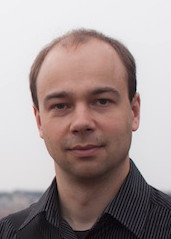 Rafał Mantiuk is a senior lecturer (associate professor) at Bangor University (UK) and a member of a Reasearch Institute of Visual Computing. Before comming to Bangor he received his PhD from the Max-Planck-Institute for Computer Science (2006, Germany) and was a postdoctoral researcher at the University of British Columbia (Canada). He has published numerous journal and conference papers presented at ACM SIGGRAPH, Eurographics, CVPR and SPIE HVEI conferences, applied for several patents and was recognized by the Heinz Billing Award (2006). Rafal Mantiuk investigates how the knowledge of the human visual system and perception can be incorporated within computer graphics and imaging algorithms. His recent interests focus on designing imaging algorithms that adapt to human visual performance and viewing conditions in order to deliver the best images given limited resources, such as computation time or display contrast. His talk takes place on Friday, March 27 at 1pm, in room E104.
Rafał Mantiuk is a senior lecturer (associate professor) at Bangor University (UK) and a member of a Reasearch Institute of Visual Computing. Before comming to Bangor he received his PhD from the Max-Planck-Institute for Computer Science (2006, Germany) and was a postdoctoral researcher at the University of British Columbia (Canada). He has published numerous journal and conference papers presented at ACM SIGGRAPH, Eurographics, CVPR and SPIE HVEI conferences, applied for several patents and was recognized by the Heinz Billing Award (2006). Rafal Mantiuk investigates how the knowledge of the human visual system and perception can be incorporated within computer graphics and imaging algorithms. His recent interests focus on designing imaging algorithms that adapt to human visual performance and viewing conditions in order to deliver the best images given limited resources, such as computation time or display contrast. His talk takes place on Friday, March 27 at 1pm, in room E104.
From high dynamic range to perceptual realism
Abstract: Today’s computer graphics techniques make it possible to create imagery that is hardly distinguishable from photographs. However, a photograph is clearly no match to an actual real-world scene. I argue that the next big challenge in graphics is to achieve perceptual realism by creating artificial imagery that would be hard to distinguish from reality. This requires profound changes in the entire imaging pipeline, from acquisition and rendering to display, with the strong focus on visual perception.
In this talk I will give an brief overview of several projects related to high dynamic range imaging and the applications of visual perception. Then I will discuss in more detail a project in which we explored the “dark side” of the dynamic range in order to model how people perceived images at low luminance. We use such a model to simulate the appearance of night scenes on regular displays, or to generate compensated images that reverse the changes in vision due to low luminance levels. The method can be used in games, driving simulators, or as a compensation for displays used under varying ambient light levels.